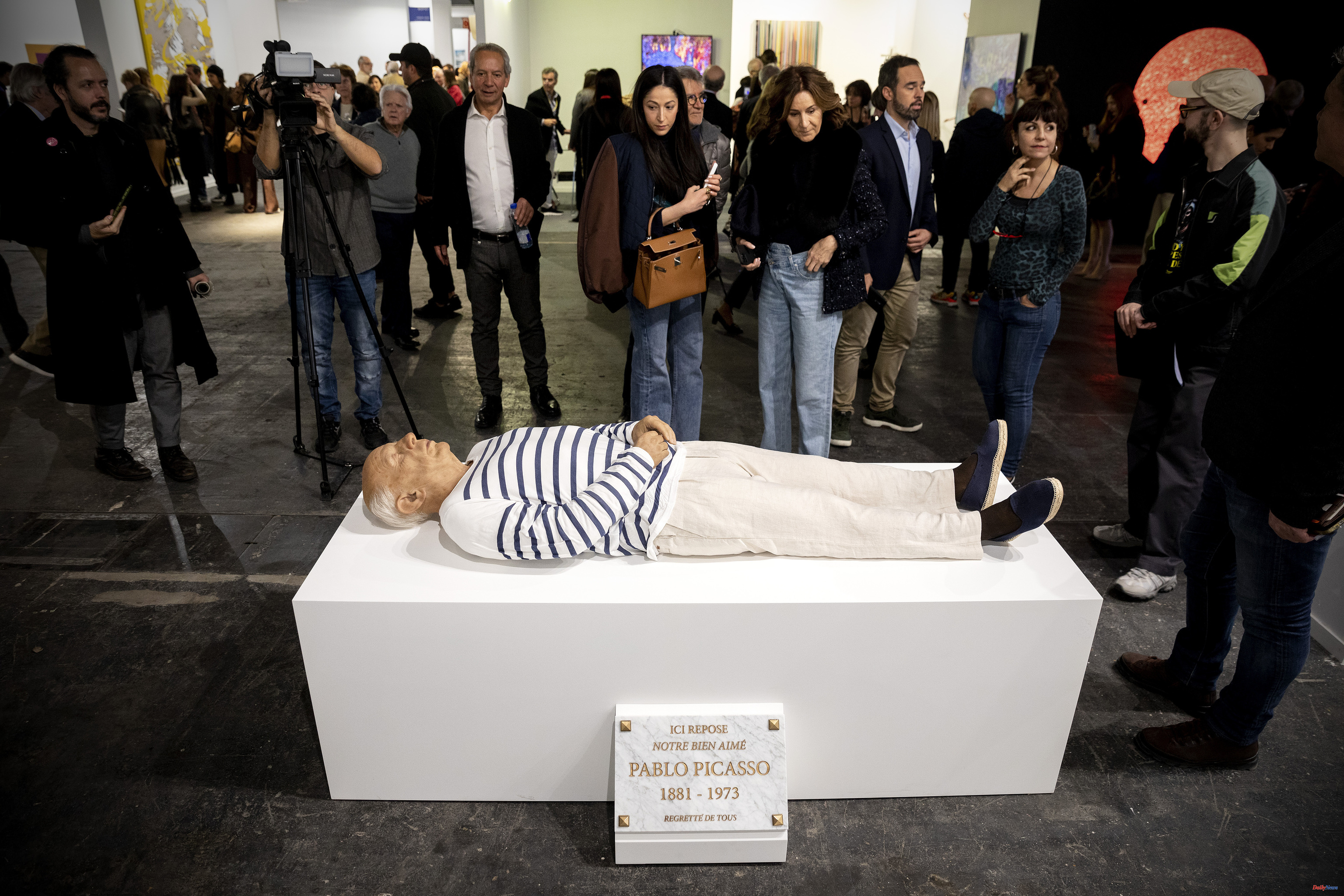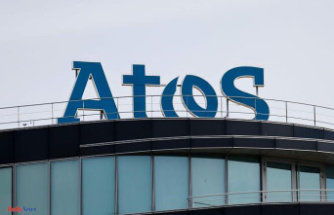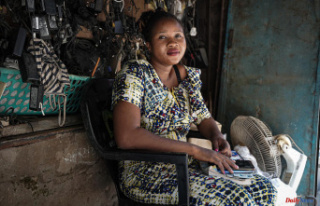At 12:00, more or less on the dot, something similar to the muezzin's call sounded over the public address system in Pavilion 9 of Arco. It was the day of the professionals of the fair and a levitical sound, extracted from a wide throat, filled the space and almost drew it. On one side, on the surface, silence made room. On the other, on the metal roof of the pavilion was the flamenco performance of Niño de Elche. Because Niño de Elche sang as if invoking a world of shadows against the commercial hubbub of the living.
Thus began the 42nd edition of Arco, open until the next 26 in the usual place: halls 7 and 9 of Ifema. In charge of the Fair, Maribel López. On this occasion, Arco brings together 211 galleries from 36 countries --170 of them in the general program--. 66% of the stands are foreign. One more boost in the desire to internationalize this event that increasingly, as Nacho Ruiz, from the T20 gallery, maintains, "has a Central European character". T20 was one of the galleries that came to Arco more than a decade ago to activate another look at contemporary art. And to showcase the work of emerging artists. Also to dribble the competent authority of the fair with some more or less accurate pranks, as well as the Finnish gallery Forsblom, the Ramón Bilbao gallery, even the mythical Helga de Alvear (in her alliance with Santiago Sierra), one of the essential in Arc's story.
In the squad of the incordiones there is also the Barcelonan ADN, which exhibits one of the decoy pieces of this edition: Picasso died here. In the manner of Maurizio Cattelan, its author, Eugenio Merino, tombs on a plinth a recumbent resin figure that is a postmortem portrait of Picasso dressed as Picasso: blue striped shirt, linen pants, espadrilles. And very serious. And very dead.
Arco is a well-articulated, well-reconfigured, mid-tone fair. This is Spain and the market is fair enough, but it works. Although it is foreign buyers who make the strongest investments. Arco works because it sticks better and better to what it is: a business meeting. Neither a biennial, nor a satellite museum, nor a cultural institution. Arco is what it should be and it does it very well.
This year, like all, also has its own controversy. This time on account of Maribel López's decision to eliminate the Proyectos de arista program, specifically dedicated in the last two years to women's works. This decision has alarmed the Women's Association of Audiovisual Arts (MAV), from where they revealed in a report that only 19% of the artists present at ARCO were women. Maribel López has said that the previous approach seemed "very binary" and "too narrow" and that it became a "women against men", when some people do not fit that definition
And what happens? Maribel López explains it: "Of course we must continue making efforts to continue giving visibility to women in art. What we have done in the last two years is to ask the galleries that the artists' projects be led by women. This year, Since we haven't done it, we can see that 15 of the 20 projects are by women. So the exercise and drive of those two years has had its result. And we, as a fair and private institution, have no obligation to establish codes of parity as public institutions. Ours, in this sense, responds to a specific will. That is why I am surprised that after the exercise we did for two years someone thinks that we are taking a step back"·
So it's all about balances. Balance also prevails in the selection of works, in the compensations between the different expressions: painting, photography, installation, video, sculpture... This year (in a clear trend) painting displays more and better proposals. Reference galleries in Hall 7 of Ifema -the one with the things of a lifetime- such as Filomena Soares, Pelaires, Nieves Fernández, the exquisite proposal by Leandro Navarro, Marlborough, the impeccable Guillermo de Osma (with a piece by Chillida in corten steel valued at 2.4 million), the French Thaddaeus Ropac or the Barcelona Mayoral -who presents one of the most expensive pieces in this edition: a canvas by Miró, Femme et oiseau (1960), measuring 54 x 42 centimeters and valued at two million euros- bet on classic supports and strong names: Picasso, Maruja Mallo, Carmen Laffón, Tàpies, Millares, Chillida, Arnulf Rainer, Chiharu Shiota, Helena Almeida, Julio González, Torres-García, Alberto García-Alix, Antonio Saura, Ana Peters...
And this is offset by the proposals in Hall 9, where the cramp is another, where the proposals have less appetite for solemnity. The spaces of Juana de Aizpuru, incombustible and first director of Arco, and with her the unbeatable Elvira González, or Espacio Valverde, or the renovated Maisterravalbuena, or Juan Silió, or Bombón, or Albarrán Bourdais, or Helga de Alvear, or Carreras Múgica, which has another of the most expensive pieces at the fair, another Cortén steel sculpture by Chillida made in 1998 and priced at 3.7 million euros.
And the artists of this ventricle of the fair? There is Dominique González-Foerster, who presents a work in homage to Enrique Vila-Matas with an image of the writer taken from the film 'Tam Tam' by Adolfo Arrieta. Also noteworthy is the work of Juan Muñoz, Miquel Barceló, Pablo Palazuelo, Hugo Bruce, Juan López, Carlos Irijalba, Cuca Nelles, Anna Dot, Eva Fabregas...
The selection of galleries is rigorous. And more conditioned to the reality of a fair that continues to grow in interest. Maribel López is committed to launching Arco into outer space with better international links. The first purchases began on Tuesday. Foreign collectors gave strength to the first day. And to the second. Although the art market, in Spain, is still in the phase of gaining height after the shaking of the pandemic. For yet another year, everyone expresses automatic optimism. But Arco never gives concrete figures. And that becomes part of success.
According to the criteria of The Trust Project












